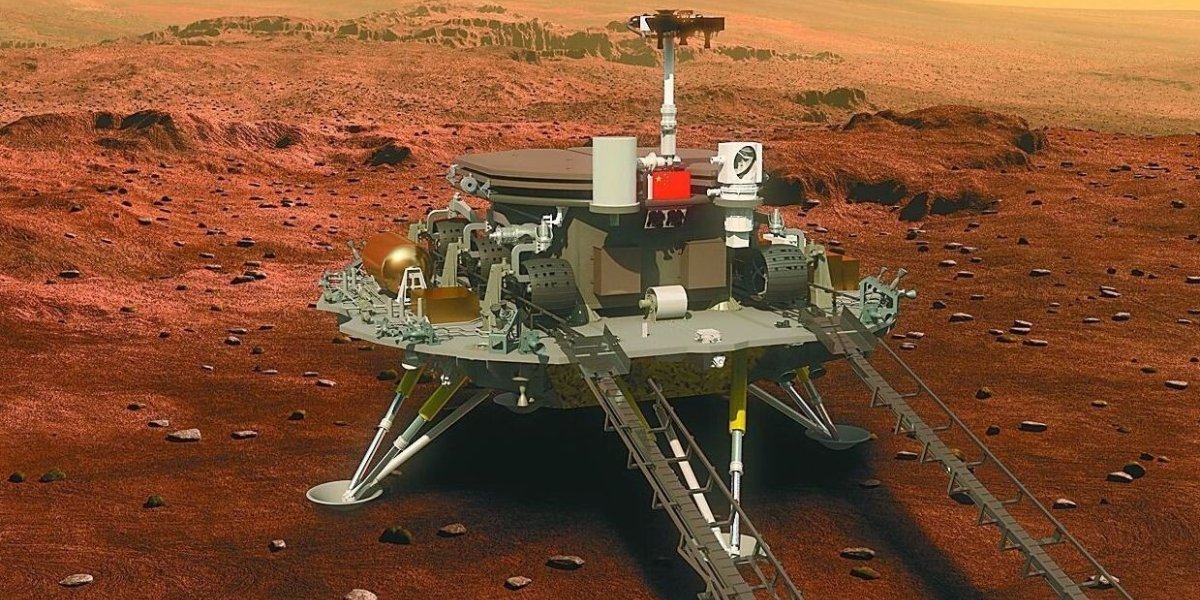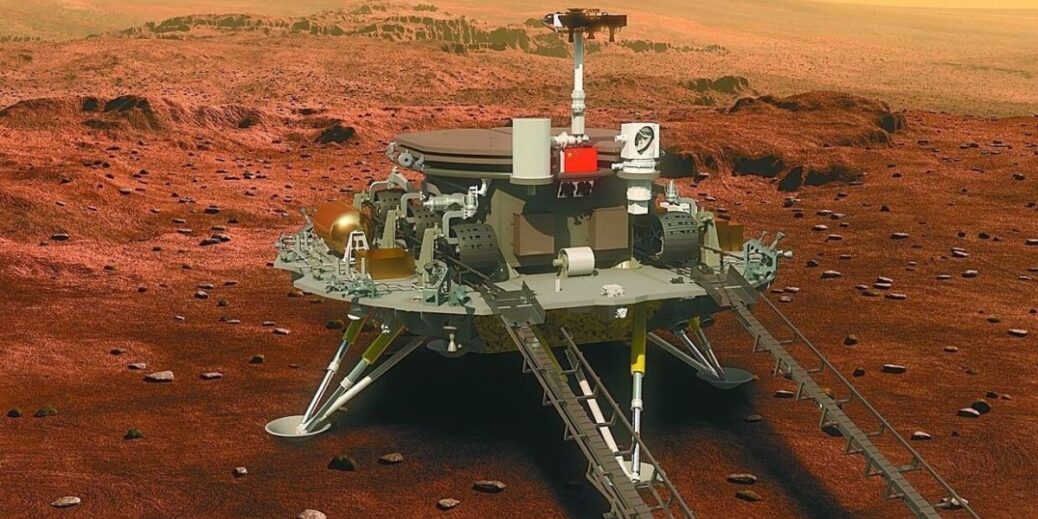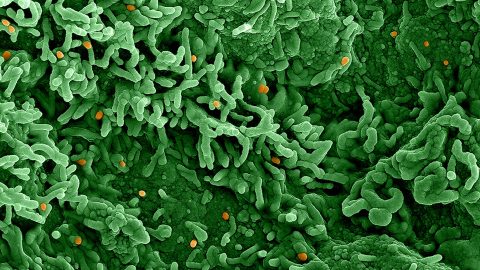
NASA has had a string of recent successes with Mars missions, but don’t let that fool you—half of all missions to Mars end in failure. The Soviet Union previously landed a spacecraft on Mars in 1971, but communication was lost just 110 seconds later. As recently as 2017, the European Space Agency’s Schiaparelli lander crashed on its way to the Martian surface. China’s first attempt on Mars was actually as part of Russia’s 2011 Fobos-Grunt mission to explore Mars and its moon Phobos. That spacecraft failed to leave Earth’s orbit and ended up reentering Earth’s atmosphere months later, leading China to pursue its own independent mission to Mars.
Don’t expect Zhurong to match up to, say, Perseverance. The latter weighs over one metric ton, is nuclear-powered, has 23 cameras, carries a demonstration system to convert carbon dioxide to oxygen, can take and stow samples that will be returned to Earth one day, and even brought a new helicopter to the planet. The former is just 240 kilograms, solar-powered, carries only six instruments, and is expected to last just 90 Martian days (though it may very well survive for longer).
Tianwen-1’s purpose is to use its 13 instruments (seven on the orbiter, six on the rover) to study the geology and soil mineralogy of Mars, map its water ice distribution, probe the electromagnetic and gravitational forces of the planet, and characterize its surface climate and environment. While the orbiter will observe and measure these things from a global perspective and snap images down to a two-meter resolution, Zhurong will home in on points of intrigue at the surface. It will use spectroscopy to find out what the soil is made of, measure magnetic fields on the ground, and track weather changes like temperature and winds.
Perhaps most intriguing is that Zhurong has a ground-penetrating radar that will let it peer into activity and structures underground 100 meters deep—10 times further than Perseverance’s radar. The hope is that this instrument will be able to detect potential reserves of water ice underground. Water resources could be a critical part of establishing a colony on Mars one day. Utopia Planitia in particular is “a relatively safe place to land and a possible place to find water,” says Wang.






Recent Comments